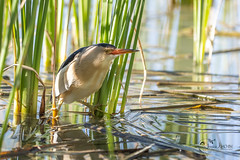For the month of February, winter wheat condition rated four percent very poor, 18 percent poor, 44 percent fair, 32 percent good, and two percent excellent, according to the Kansas Agricultural Statistics Service.
Temperatures were colder than normal, with most areas averaging six to ten degrees colder than normal. As the snow melted, wheat fields started to green up and show signs of growth. Some concerns continue regarding the potential for winterkill due to the extremely cold temperatures. The majority of Kansas is abnormally dry, and the western half of the state continues to be in severe drought conditions.
“The Kansas wheat crop is in below average conditions,” said Kansas Wheat CEO Justin Gilpin. “We are seeing below average moisture conditions as the crop is nearing time to break dormancy.”
David Schemm, from Wallace County, Kan., reports: “Late planted wheat is in poor condition; that would account for about of the 20% of the wheat. The rest of the wheat is ok. I checked Tuesday, and it looks like it may have lost about 20% of the tillers.”
Brian Linin, from Sherman County, Kan., reports: “Our conditions haven’t changed much in the past month. We have had some minor instances of maintenance moisture, but nothing significant enough to improve the conditions and outlook. We need rain and/or snow.”
Richard Randall reports: “Not much change in Scott County. Snow has not been very wet. Wheat is greening up, and some topdressing has started.”
Mike McClellan, from Rooks County, reports: “A light dusting of snow this morning brings more of the same here: slick roads and not much moisture. Our wheat stands are decent but we have ‘no money in the bank’ as far as moisture. We need good rains this spring to make a crop. The cold temps concern me, as the wheat had started to green back up, and we had no snow cover to speak of. We will know more in a month. Then we will say we will know more in June!”
Randy Fritzemeier, from Stafford County, Kan., reports: “I think our winter wheat conditions are still ok, even though we’ve had sub-zero weather. We had about 6 inches of snow cover this past weekend. The snow will also help a little with moisture for the wheat. The wheat had greened up a little from earlier in the winter, but still hasn’t started to try to grow.”
Scott Van Allen, from Sedgwick County, reports: “We received about ½ inch of sleet and snow – enough soil moisture to keep us going, but we will need much more at green up. The jury is still out on winter kill as we hit -2 degrees here with little, if any, snow cover after some 50-60 degree days. Some of the late planted small wheat was not greening up on those days, but we will wait and see.”
Doug Keesling, from Rice County, reports: “Our wheat in central Kansas is still asleep today. The early planted wheat in area was burned back very hard, but still looks in average shape, since it was well rooted and had adequate moisture in the fall. The later half of wheat, planted after Fly date or after fall crops, came up before winter but was not as well rooted before the first major freeze hit. Since that freeze I have not seen them green up any compared to the earlier plantings. I feel their tillers have been hurt, but will not know for sure until we have warmer weather. The later we do get that warm up will greatly hurt yield if more tillers can not develop. Sub soil moisture is limited to dry in most places, so we will be needing spring rains to increase potential yields.”
Ken Wood reports: “Things still look pretty tough in northern Dickinson County. There are portions of fields that haven’t started to show any green yet. We will know more about the extent of damage in the next couple of weeks.”
The most positive reports come from the northeast crop reporting district, which unfortunately also has the least planted wheat acres. Jay Armstrong, from Atchison County, reports that the northeast corner of the state received decent snows in the month of February: “The wheat looks good here with plenty of moisture. Some wheat is showing some winter burn from the cold winds, but I don’t think it will have much of an effect as long as the weather stays normal.”
The majority of the wheat in Kansas is grown in central and western Kansas, where moisture levels continue to be below average.
Would you like to share the condition of the wheat crop in your area? Please send me an email at mboswell@kswheat.com or leave a comment below.














 Five Kansas FFA State Officers and the Kansas National FFA Officer Candidate visited the Kansas Whe
Five Kansas FFA State Officers and the Kansas National FFA Officer Candidate visited the Kansas Whe




